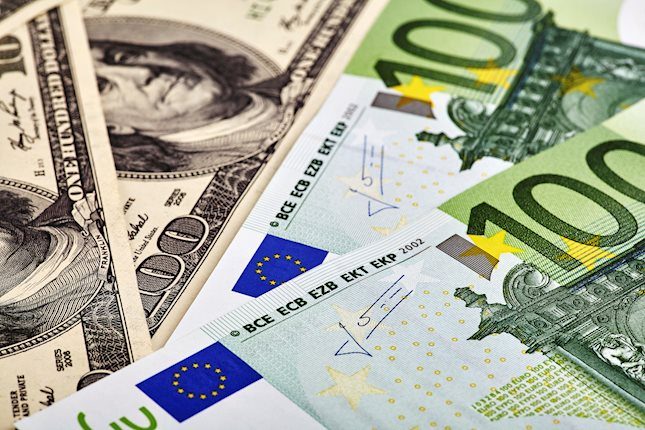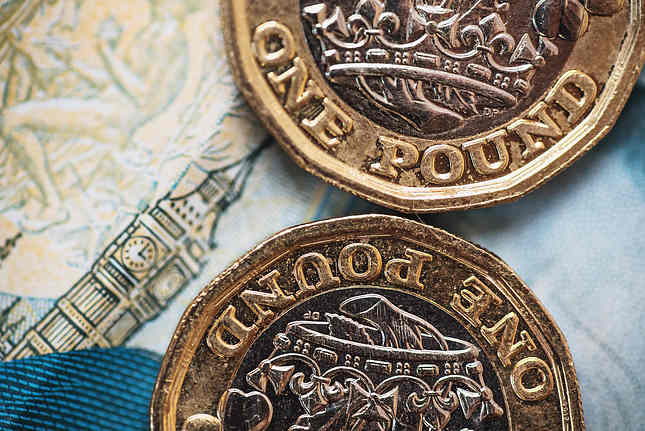- USD/CAD trades sideways near 1.3800 as investors await Fed speakers for more guidance on interest rates.
- The Fed is expected to follow a moderate rate-cut path.
- Investors expect the BoC to cut interest rates again to revive job growth.
The USD/CAD pair trades in a tight range near the round-level resistance of 1.3800 in Friday’s European session. The Loonie pair trades sideways as investors await speeches from a slew of Federal Reserve (Fed) officials, who are scheduled to speak in the North American session.
Fed policymakers such as Atlanta Fed Bank President Raphael Bostic, Minneapolis Fed Bank President Neel Kashkari, and Fed Governor Christopher Waller are expected to provide fresh cues about the likely interest rate action in the remainder of the year.
According to the CME FedWatch tool, 30-day Federal Funds futures pricing data shows that there will a 50 basis points (bps) further decline in interest rates in the remaining year, suggesting that the Fed will cut its borrowing rates by 25 bps in November and December.
The Fed seems to follow a moderate policy-easing cycle as recent United States (US) data for September has diminished economic slowdown risks.
Meanwhile, the Canadian Dollar (CAD) broadly stays on the backfoot as the Bank of Canada (BoC) is expected to cut its interest rates again on Wednesday. The BoC has already reduced its borrowing rates by 75 bps to 4.25% this year.
More rate cuts from the BoC appear to be in the pipeline as price pressures in Canada seem to have come under control, and the economy is not operating at full-employment levels. Canadian Unemployment Rate decelerated at a faster-than-expected pace to 6.6% in September but is well above the bank’s target of 5%.
Canadian Dollar FAQs
The key factors driving the Canadian Dollar (CAD) are the level of interest rates set by the Bank of Canada (BoC), the price of Oil, Canada’s largest export, the health of its economy, inflation and the Trade Balance, which is the difference between the value of Canada’s exports versus its imports. Other factors include market sentiment – whether investors are taking on more risky assets (risk-on) or seeking safe-havens (risk-off) – with risk-on being CAD-positive. As its largest trading partner, the health of the US economy is also a key factor influencing the Canadian Dollar.
The Bank of Canada (BoC) has a significant influence on the Canadian Dollar by setting the level of interest rates that banks can lend to one another. This influences the level of interest rates for everyone. The main goal of the BoC is to maintain inflation at 1-3% by adjusting interest rates up or down. Relatively higher interest rates tend to be positive for the CAD. The Bank of Canada can also use quantitative easing and tightening to influence credit conditions, with the former CAD-negative and the latter CAD-positive.
The price of Oil is a key factor impacting the value of the Canadian Dollar. Petroleum is Canada’s biggest export, so Oil price tends to have an immediate impact on the CAD value. Generally, if Oil price rises CAD also goes up, as aggregate demand for the currency increases. The opposite is the case if the price of Oil falls. Higher Oil prices also tend to result in a greater likelihood of a positive Trade Balance, which is also supportive of the CAD.
While inflation had always traditionally been thought of as a negative factor for a currency since it lowers the value of money, the opposite has actually been the case in modern times with the relaxation of cross-border capital controls. Higher inflation tends to lead central banks to put up interest rates which attracts more capital inflows from global investors seeking a lucrative place to keep their money. This increases demand for the local currency, which in Canada’s case is the Canadian Dollar.
Macroeconomic data releases gauge the health of the economy and can have an impact on the Canadian Dollar. Indicators such as GDP, Manufacturing and Services PMIs, employment, and consumer sentiment surveys can all influence the direction of the CAD. A strong economy is good for the Canadian Dollar. Not only does it attract more foreign investment but it may encourage the Bank of Canada to put up interest rates, leading to a stronger currency. If economic data is weak, however, the CAD is likely to fall.
Information on these pages contains forward-looking statements that involve risks and uncertainties. Markets and instruments profiled on this page are for informational purposes only and should not in any way come across as a recommendation to buy or sell in these assets. You should do your own thorough research before making any investment decisions. FXStreet does not in any way guarantee that this information is free from mistakes, errors, or material misstatements. It also does not guarantee that this information is of a timely nature. Investing in Open Markets involves a great deal of risk, including the loss of all or a portion of your investment, as well as emotional distress. All risks, losses and costs associated with investing, including total loss of principal, are your responsibility. The views and opinions expressed in this article are those of the authors and do not necessarily reflect the official policy or position of FXStreet nor its advertisers. The author will not be held responsible for information that is found at the end of links posted on this page.
If not otherwise explicitly mentioned in the body of the article, at the time of writing, the author has no position in any stock mentioned in this article and no business relationship with any company mentioned. The author has not received compensation for writing this article, other than from FXStreet.
FXStreet and the author do not provide personalized recommendations. The author makes no representations as to the accuracy, completeness, or suitability of this information. FXStreet and the author will not be liable for any errors, omissions or any losses, injuries or damages arising from this information and its display or use. Errors and omissions excepted.
The author and FXStreet are not registered investment advisors and nothing in this article is intended to be investment advice.
Recommended content
Editors’ Picks

EUR/USD rebounds to near 1.0850, awaits Fedspeak
EUR/USD is rebounding to near 1.0850 in the early European session on Friday. China's stimulus optimism and a broad US Dollar correction help the pair recover the dovish ECB decision-induced losses. All eyes remain on the Fedspeak.

GBP/USD pares UK data-led gains below 1.3050
GBP/USD is trading below 1.3050 in European trading on Friday, reversing upbeat UK Retail Sales data-led gains. The UK data failed to alter dovish BoE expectations. The downside, however, appears limited by the US Dollar pullback. Fedspeak awaited.

Gold plants flag above fresh all-time high at $2,700 on increased prospects of global easing
Gold (XAU/USD) establishes a foothold above the $2,700 psychological level on Friday after piercing through above this level on the previous day, setting yet another fresh all-time high.

Ethereum demand must increase to fuel any rally
Ethereum (ETH) edges up slightly on Friday, adding to 6.5% gains so far this week after surpassing key resistance levels on Monday, bolstered by a net positive inflow of over $79 million through Thursday.

Canada debates whether to supersize rate cuts
A fourth consecutive Bank of Canada rate cut is expected, but the market senses it will accelerate the move towards neutral policy rates with a 50bp step change. Inflation is finally below target and unemployment is trending higher, but the economy is still growing.

Best Forex Brokers with Low Spreads
VERIFIED Low spreads are crucial for reducing trading costs. Explore top Forex brokers offering competitive spreads and high leverage. Compare options for EUR/USD, GBP/USD, USD/JPY, and Gold.